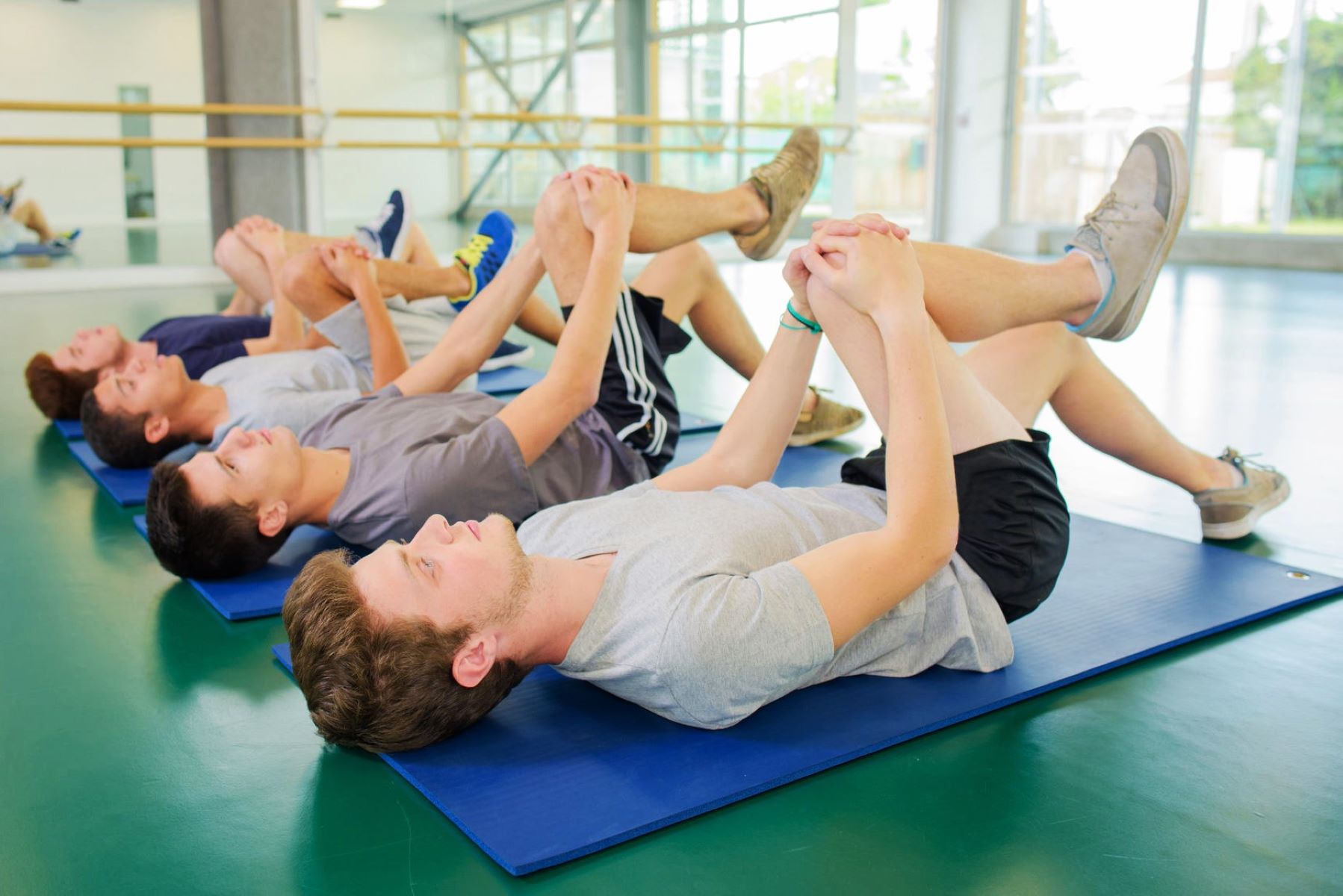Home>Health & Nutrition>Injury Prevention>Treating Neck Pain From Running


Injury Prevention
Treating Neck Pain From Running
Published: February 24, 2024
Learn effective injury prevention strategies to treat and prevent neck pain from running. Discover tips to keep your neck pain-free while enjoying your runs.
(Many of the links in this article redirect to a specific reviewed product. Your purchase of these products through affiliate links helps to generate commission for Therunningadvisor.com, at no extra cost. Learn more)
Table of Contents
Understanding the Causes of Neck Pain from Running
Neck pain is a common complaint among runners and can stem from various factors related to running form, muscle tension, and overall body mechanics. Understanding the causes of neck pain from running is crucial in addressing and preventing this discomfort.
-
Poor Running Form: Maintaining proper running form is essential for preventing neck pain. When runners hunch their shoulders or crane their necks forward, it can lead to excessive strain on the neck muscles, causing discomfort and potential injury.
-
Muscle Tension: Running with tense shoulders and neck muscles can exacerbate neck pain. Stress and tension in these areas can build up over time, leading to discomfort during and after running sessions.
-
Inadequate Warm-Up: Failing to properly warm up before a run can contribute to neck pain. Without a sufficient warm-up, the muscles in the neck and shoulders may not be adequately prepared for the physical demands of running, increasing the risk of strain and discomfort.
-
Overuse and Fatigue: Overtraining or pushing beyond one's physical limits can lead to muscle fatigue and overuse, which may manifest as neck pain. It's essential to listen to the body's signals and allow for adequate rest and recovery to prevent overuse-related discomfort.
-
Improper Equipment: Running with ill-fitting or worn-out shoes can impact the body's alignment and contribute to neck pain. Additionally, using improper running gear, such as a poorly fitted hydration pack or carrying weight unevenly, can strain the neck and shoulders.
By understanding these causes, runners can take proactive measures to address and prevent neck pain, ultimately enhancing their overall running experience.
Preventing Neck Pain during Running
Preventing neck pain during running is essential for maintaining a comfortable and enjoyable experience. By implementing proactive measures, runners can significantly reduce the risk of neck discomfort and potential injury. Here are several effective strategies for preventing neck pain during running:
1. Maintain Proper Running Form
Sustaining proper running form is crucial for preventing neck pain. Focus on keeping the shoulders relaxed and avoiding hunching or tensing the neck. Engage the core muscles to support the upper body and maintain an upright posture while running.
2. Perform Regular Neck and Shoulder Stretches
Incorporating regular neck and shoulder stretches into your pre-run and post-run routines can help alleviate tension and reduce the likelihood of neck pain. Simple stretches such as neck rotations, shoulder rolls, and gentle neck tilts can promote flexibility and relieve muscle tightness.
3. Strengthen Neck and Upper Back Muscles
Building strength in the neck and upper back muscles can provide better support and stability during running, reducing the risk of strain and discomfort. Incorporate exercises such as neck retractions, shoulder blade squeezes, and resistance band exercises to strengthen these areas.
4. Stay Hydrated and Maintain Proper Nutrition
Proper hydration and nutrition play a vital role in preventing muscle tension and fatigue, which can contribute to neck pain during running. Ensure adequate intake of water and essential nutrients to support muscle function and overall physical well-being.
5. Gradually Increase Running Intensity
Avoid sudden increases in running intensity or mileage, as this can lead to overuse and strain on the neck muscles. Gradually progress your running routine to allow the body to adapt and minimize the risk of overuse-related neck pain.
6. Use Appropriate Running Gear
Invest in well-fitted running shoes and gear that provide proper support and alignment. Consider using a lightweight hydration pack with adjustable straps to evenly distribute weight and minimize strain on the neck and shoulders.
7. Listen to Your Body
Pay attention to any signs of discomfort or tension in the neck and shoulders during running. If you experience persistent or worsening neck pain, it's essential to modify your running routine, seek professional guidance, and allow for adequate rest and recovery.
By incorporating these preventive measures into your running regimen, you can significantly reduce the likelihood of experiencing neck pain and enhance your overall running performance and enjoyment.
Stretches and Exercises for Relieving Neck Pain
Incorporating targeted stretches and exercises into your routine can play a pivotal role in alleviating neck pain associated with running. These activities not only help relieve muscle tension but also enhance flexibility and strengthen the supporting muscles, promoting overall neck health. Here are several effective stretches and exercises specifically tailored to relieve neck pain:
Neck Rotations
Gently rotate your neck from side to side, allowing the chin to approach the shoulder on each side. Perform this movement in a slow and controlled manner, focusing on releasing tension in the neck muscles. Repeat the rotations several times to promote flexibility and relieve stiffness.
Shoulder Rolls
Initiate shoulder rolls by lifting your shoulders up towards your ears, then rolling them back and down in a smooth, circular motion. This exercise helps release tension in the shoulder and upper back muscles, indirectly contributing to neck pain relief.
Neck Tilts
While sitting or standing tall, slowly tilt your head to one side, bringing your ear towards the shoulder. Hold the stretch for a few seconds, feeling the gentle elongation of the neck muscles. Repeat the tilt on the opposite side to promote balanced flexibility.
Neck Retractions
Sit or stand with proper posture, then gently tuck your chin towards your neck, creating a subtle double chin appearance. This movement engages the deep neck muscles and helps improve neck alignment, reducing strain and discomfort.
Shoulder Blade Squeezes
Begin by sitting or standing with your arms by your sides. Squeeze your shoulder blades together, holding the position for a few seconds before releasing. This exercise targets the upper back and shoulder muscles, promoting better posture and reducing tension in the neck area.
Resistance Band Exercises
Utilize a resistance band to perform exercises that target the neck and upper back muscles. For instance, anchor the band at a low point and gently pull the band towards your body, engaging the upper back and shoulder muscles. These resistance exercises can effectively strengthen the supporting muscles, aiding in neck pain relief.
Incorporating these stretches and exercises into your routine, both before and after running, can significantly contribute to relieving neck pain and preventing future discomfort. It's essential to perform these movements in a controlled and mindful manner, focusing on releasing tension and promoting flexibility in the neck and surrounding muscles. By consistently integrating these activities into your regimen, you can proactively address and alleviate neck pain, enhancing your overall running experience.
Proper Posture and Form for Running to Avoid Neck Pain
Maintaining proper posture and form while running is paramount in preventing neck pain and promoting overall musculoskeletal health. By focusing on alignment, body mechanics, and mindful movement, runners can significantly reduce the risk of neck discomfort and potential injury. Here's a detailed exploration of the key elements for achieving proper posture and form during running:
Upright Alignment
When running, strive to maintain an upright alignment, with the head positioned directly above the shoulders and the shoulders aligned over the hips. Avoid leaning too far forward or backward, as this can place undue strain on the neck and upper back muscles. By aligning the body in a vertical position, runners can distribute the impact of each stride more evenly, minimizing the potential for neck pain.
Relaxed Shoulders
Consciously relax the shoulders while running, allowing them to remain in a natural, downward position. Tension in the shoulders can radiate to the neck, leading to discomfort and restricted movement. By keeping the shoulders relaxed and avoiding unnecessary elevation or hunching, runners can reduce the likelihood of developing neck pain during and after their runs.
Engaged Core Muscles
Activating the core muscles plays a crucial role in supporting proper posture and form while running. A strong and engaged core helps stabilize the upper body, preventing excessive swaying or twisting that can contribute to neck strain. By maintaining core engagement, runners can promote a more efficient and balanced running gait, reducing the impact on the neck and surrounding muscles.
Balanced Head Position
The position of the head is a key factor in preventing neck pain during running. Aim to keep the head in a neutral position, neither excessively tilted upward nor excessively lowered. Maintaining a balanced head position minimizes strain on the neck muscles and promotes a more fluid and natural running stride. Runners should focus on looking straight ahead, allowing the neck to remain in a comfortable and aligned position.
Mindful Breathing
Conscious breathing techniques can positively influence posture and form during running. By focusing on deep, diaphragmatic breathing and maintaining a relaxed breathing rhythm, runners can prevent unnecessary tension in the neck and shoulder muscles. Mindful breathing promotes overall relaxation and enhances the body's ability to maintain proper alignment and form throughout the run.
Gradual Adaptation
For runners transitioning to a new running style or form, gradual adaptation is essential. Abrupt changes in running posture or form can lead to muscle imbalances and increased strain on the neck and upper back. By gradually introducing adjustments to posture and form, runners allow the body to adapt and strengthen supporting muscles, reducing the risk of neck pain and discomfort.
By integrating these elements into their running practice, individuals can cultivate proper posture and form, ultimately reducing the likelihood of experiencing neck pain. Emphasizing alignment, relaxation, and mindful movement not only enhances running performance but also supports long-term musculoskeletal health, allowing runners to enjoy their running endeavors with greater comfort and confidence.
Seeking Professional Help for Persistent Neck Pain
Persistent neck pain that persists despite preventive measures and self-care efforts may necessitate seeking professional help. When neck pain interferes with daily activities, disrupts sleep, or shows no signs of improvement, consulting a healthcare professional specializing in musculoskeletal health is crucial.
Healthcare providers such as physiotherapists, chiropractors, or sports medicine physicians can conduct a comprehensive assessment to identify the underlying causes of persistent neck pain. Through physical examinations, diagnostic tests, and detailed discussions about the individual's running habits and lifestyle, these professionals can pinpoint specific factors contributing to the ongoing discomfort.
Upon identifying the root causes of persistent neck pain, healthcare providers can develop personalized treatment plans tailored to address the individual's unique needs. These plans may include targeted manual therapy to alleviate muscle tension, corrective exercises to improve posture and muscle balance, and recommendations for modifications in running form and training routines.
In some cases, healthcare professionals may collaborate with other specialists, such as orthopedic surgeons or pain management experts, to explore advanced treatment options for persistent neck pain. This collaborative approach ensures that individuals receive comprehensive care and access to a wide range of therapeutic interventions, including injections, minimally invasive procedures, or surgical consultations if deemed necessary.
Furthermore, seeking professional help for persistent neck pain offers the opportunity to receive guidance on injury prevention strategies and long-term neck health. Healthcare providers can educate individuals on proper warm-up and cool-down techniques, optimal running surfaces, and the importance of gradual training progression to minimize the risk of recurrent neck pain.
By proactively addressing persistent neck pain with the guidance of healthcare professionals, individuals can gain valuable insights into their musculoskeletal health and receive targeted interventions to alleviate discomfort and enhance their overall well-being. Seeking professional help empowers individuals to take proactive steps towards long-term neck pain management, enabling them to continue pursuing their passion for running with confidence and comfort.
In summary, seeking professional help for persistent neck pain is a proactive and essential step in addressing ongoing discomfort and promoting optimal musculoskeletal health. Healthcare professionals specializing in musculoskeletal care can offer personalized treatment plans, collaborative interventions, and valuable guidance on injury prevention, empowering individuals to effectively manage persistent neck pain and maintain their active lifestyles.











